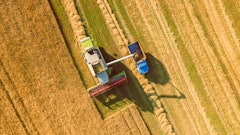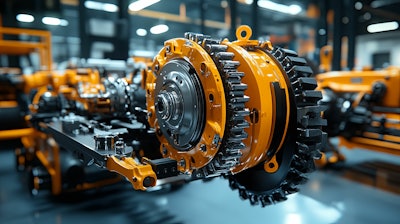
Powertrains are comprised of components that generate and deliver power to the road surface and are critical for off-highway vehicles and technology. The mining, agriculture and construction industries often deal with challenging terrain and conditions and need the technologies to match these conditions. The future of the off-highway industry will depend a lot on powertrains and there are many challenges and opportunities ahead.
These industry experts on the off-highway industry offered their insights on powertrains in a roundtable format:
- Dr. Mihai Dorobantu, director of technology planning and government affairs, Eaton
- Jamie Fox, principal analyst, Interact Analysis
- George Paterson, vice president of product, Turntide Technologies.

Question: What emerging technologies are shaping the future of powertrains in the off-highway industry?
Dr. Mihai Dorobantu: Emerging technologies that will shape future powertrains used for off-highway applications include ultra-low NOx diesel engines, hydrogen and other low-carbon fuels as well as hybrid solutions.
Jamie Fox: Automation (such as Monarch tractors), connectivity and a trend away from diesel are all slowly shaping the future of powertrains. Future generations of machines will be more connected, sharing more data, less reliant on diesel and likely self driving in at least some cases. This will either add value to the machines, enabling them to be sold at higher cost, or provide opportunities for cost savings. Efficient hydraulics also will; support the transition to electric or lead to engine downsizing.
George Paterson: Advancements in manufacturing techniques have allowed axial flux motors to become viable for more mainstream applications while battery chemistry improvements continuously provide more power and energy density for our customers.
With new battery regulations on the horizon for vehicles and equipment, designers and manufacturers of batteries have new challenges that include fire safety and thermal propagation, recycling and battery passports.
Original equipment manufacturers (OEMs) should ensure that they are working with a partner that continuously looks ahead to meet existing and upcoming regulations. In addition, axial flux motors are becoming a requirement in high-torque, space-constrained applications, which is typical of most electric vehicle and equipment.
Question: How are powertrain components evolving to meet the needs of increased automation and connectivity in off-highway vehicles?
George Paterson: In today’s off-highway sector, most components are connected with whole vehicle telematics or component technology. Batteries have a battery management system (BMS), which includes individual cell management and battery management as a whole unit. This important system:
- Ensures the battery operates and performs as designed.
- Protects cells and the battery from abuse and out-of-specification scenarios.
- Maintains the battery in a state where it can meet the requirements of the application.
- Interfaces with the host application
- Allow over the air diagnostics and updates.
In addition to batteries, there are also:
- Intercomponent communication between the battery, inverter, motor, and cooling components
- Over the air diagnostics and updates
- Sensors monitoring speed, torque, temperature, and vibration, among other parameters
- Integration of components such as motors, inverters, and gearing.
 Batteries have a battery management system (BMS) and involve many different aspects.Turntide Technologies
Batteries have a battery management system (BMS) and involve many different aspects.Turntide Technologies
Question: What role do hybrid powertrains play in the current landscape of off-highway vehicles, and how do they compare to fully electric solutions?
Dr. Mihai Dorobantu: Series hybrid powertrains, or said differently, diesel-electric powertrains, are gaining momentum. These systems use an internal combustion engine (ICE) to drive a generator, which powers an electric drivetrain without directly driving the wheels. They are suited for high-demand applications like mining trucks and wheel loaders.
Parallel hybrids, which combine ICE and electric power for specific tasks, are ideal for stop-and-go vehicles like dump trucks, where braking energy can be recovered efficiently.
Compared to fully electric solutions, hybrids are more viable for vehicles requiring high energy per trip. Battery electric vehicles (BEVs) face challenges such as heavy batteries (6 to 10 tons) costing well over $200,000 and the lack of charging infrastructure at job sites.
Jamie Fox: Hybrids are often talked about and can offer an alternative to full electrification where the latter is too challenging or expensive. Hybrids do require the development of dual powertrain, but can ease the burden of charging infrastructure and concern of machines running out of energy. However, in practice there are currently few hybrids on the market or in development due to the complexity of the powertrain and the fact that electrification is perceived as a better long-term environmental solution, at least in compact equipment and the mining sector.
There is a good chance that hybrids will not attract government support in the future so it can make more sense to continue with diesel until a company is ready to develop a full electric solution. Hybrid approaches can also be used in the hydraulics as well as the powertrain.
George Paterson: In the off-highway sector, batteries may be needed to provide a boost to other fuel sources to get the torque and lift power required of some of the larger pieces of equipment. Hybrid systems are sometimes the only option if very long range or duty cycles are needed.
Question: How are the challenges different for powertrains different in the construction industry vs. the mining industry vs. the agricultural industry?
Dr. Mihai Dorobantu: There are several differences among the three industries such as:
- Construction: Vehicles like dump trucks benefit from parallel hybrids, which recover braking energy and use electric power for fuel savings and driving implements like PTOs.
- Mining: Powertrains must handle massive loads uphill and absorb significant braking energy downhill, which batteries cannot store. Diesel-electric systems, similar to locomotives, are common.
- Agriculture: Tractors face diverse work cycles, from light- to heavy-duty tasks. Hybridization is less practical, except for mild hybrids (48V systems) to power implements like seeders and planters.
Jamie Fox: The challenges for some machine types are very different to those of others, even within a sector. However, there are some general themes. Construction equipment such as mini excavators are more likely be used in cities, or even indoors, which makes air and noise pollution more important. The mining sector has a stronger focus on emissions and climate change than the agricultural sector.
For mining, the size of individual projects and level of investment can be very high, so there is more ability to look at solutions that require research and development and investment. In the case of electrification for example, this might mean battery swopping and tethered vehicles may stand at least some chance, but this wouldn't be considered for tractors. Finally, the mining industry has very high running costs and so that is more of a focus. Tractors are different—here smaller operators may look more closely at the cost of new machine.
George Paterson: In mining, processes are often repetitive (especially for dump trucks), so electric systems with charging available as trucks are loaded and unloaded are ideal. In the agriculture sector, electric power trains can offer a compelling alternative to traditional ones, especially when total cost of ownership is considered. In construction, for small- and medium-size equipment, electric power is either the norm or becoming the norm, especially in indoor and urban areas and other locations that require quiet, zero-emission operation. For larger machines in the short-term, hybrid or highly efficient biodiesel engines will likely be dominant because of the energy density offered by the fuel.
Question: Taken another way, how are the challenges similar in each industry?
Dr. Mihai Dorobantu: All off-highway industries rely heavily on diesel engines for long periods of high power. Mining trucks climbing hills, tractors plowing fields, and cement mixers all require peak performance for extended durations. The shared challenge is achieving low emissions at high power, which differs from on-road trucks that optimize efficiency at medium loads.
Jamie Fox: Off-highway machinery in all sectors needs to be reliable, resistant to dust and dirt, able to deliver the energy needed during the day and be able to work in a variety of different types of remote locations away from existing infrastructure. Safety is always important and is important in any industry, and this will become even more of a discussion as vehicles become autonomous in the future. Customers in all three industries can be conservative at times and look for a reliable supplier/partner that has a good track record of meeting their needs and getting the job done.
George Paterson: The federal emission requirements are the same and some of the power and torque requirements are similar. For larger equipment, providing the required energy density is a challenge across most industries.
Question: What do you see as a dominant theme involving powertrains in the next 3-5 years and how can companies prepare?
Dr. Mihai Dorobantu: Over the next 3 to 5 years, the focus will be on reducing NOx and CO2 emissions, driven by regulations at all levels. Electrification of accessories will also grow. Companies should adopt proven on-highway technologies where feasible while tailoring solutions for off-highway needs to maximize efficiency and compliance.
Jamie Fox: Electrification will continue to be a key theme. Suppliers of machines need to understand demand and customer’s concerns now. However, biofuel, in areas such as agriculture, is also an area of interest. Biofuel machines would be more similar to conventional diesel in familiarity and use, and not require a change in operations or supply chain. Biofuel is in theory close to carbon neutral, since although it emits CO2 in operation CO2 has also been removed from the atmosphere in the process of growing the crops.
George Paterson: The use of axial flux motors in space-constrained electric systems is a major trend moving forward. As these motors’ manufacture is scaled to be used in more than niche applications, they will become the choice for many off-highway machines. In addition to this technology, working with a manufacturer with strategic partnerships to provide all the components required for an electric drive train will become paramount. A partner that can provide the battery, motor, controller, inverter, clutches, transmissions, and gearboxes that are ideal for the application is ideal. This ensures that all the components integrate and work appropriately together.


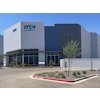

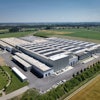

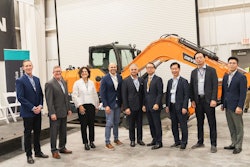

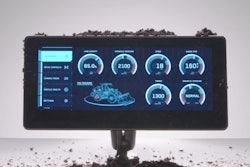

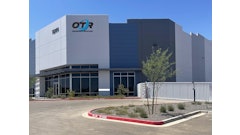

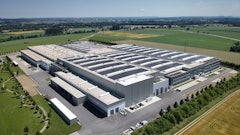
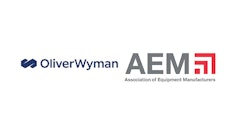
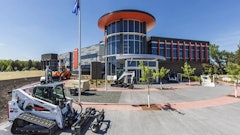
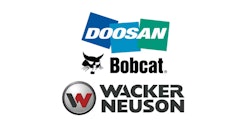
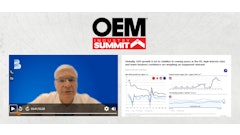
![Hcm Ax Landcros Press Release[32] jpg](https://img.oemoffhighway.com/mindful/acbm/workspaces/default/uploads/2025/11/hcmaxlandcros-press-release32jpg.mAEgsolr89.jpg?ar=16%3A9&auto=format%2Ccompress&fit=crop&h=135&q=70&w=240)

